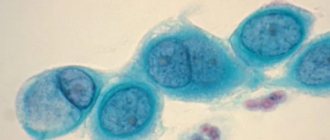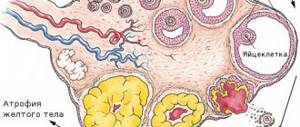22.06.2017
Ureaplasma is part of the human microflora, something between a virus and a bacterium. Doctors, explaining to their patients what ureaplasma is, often say that it is an intracellular parasite.
Actually, it is a small microorganism that does not have a cell wall. Ureaplasma is related to bacteria by metabolism, and by size and genetic apparatus to viruses.
The causative agent of the disease in the human body can be 2 types of microbes, the first is Ureaplasma urealiticum, the second is Ureaplasma parvum. Microbes are localized in the organs of the urinary system, rarely in the tissues of the lungs and kidneys. Ureaplasma parvum is detected more often in women; in men there are practically no pronounced symptoms. The disease is included in the group of STDs, treatment takes a long time and proceeds with peculiarities, there is a high risk of complications.
Unlike mycoplasma, ureaplasma is capable of breaking down urea. Actually, this is what the name of the microbe is connected with. Due to the ability to be realized, the processes of development of urolithiasis and urate nephrolithiasis are triggered in the body.
The disease is characterized by a long course of the inflammatory process and frequent complications. Often there are no symptoms of ureaplasmosis, which complicates timely diagnosis and therapy.
What kind of microbe is ureaplasma, is it dangerous for humans?
Ureaplasmas are tiny bacteria classified in the family Mycoplasmataceae and the order Mycoplasma. In size and structure, they are similar to viruses - they do not have a cell membrane and DNA. These microbes are normal flora of the human urinary system.
Ureaplasma was first isolated from the genitourinary tract of a man with urethritis in 1954. Since there were clear signs of acute inflammation, the bacterium was classified as pathogenic, and medicine “fought it” for a long time, immediately prescribing treatment regimens when detected.
In 2006, it was classified as a pathogen of sexually transmitted infections, but in 2020 it was classified as a conditional pathogen - that is, in small quantities the bacterium can be found in the body of women and men and does not require treatment in this case.
In conditions favorable for ureaplasma, it can be activated, its numbers increase, which provokes an active inflammatory process. The bacterium can be transmitted sexually, like other components of the flora of the genitourinary organs.
In general, ureaplasmas are considered normal flora of the urinary organs and even have a certain function - they break down urea into ammonia, which is then excreted in the urine.
Classification
There are 7 types of ureaplasma (as of May 2020), three of them are found in humans:
- Ureaplasma hominis,
- Ureaplasma urealyticum,
- Ureaplasma parvum.
The first variety is considered absolutely safe for humans, and the second two variants (U. urealyticum and parvum) are conditional pathogens - transient microorganisms that can periodically be found on the mucous membrane of the genitourinary organs in women, but when their numbers increase, they cause an inflammatory process.
The danger of ureaplasma lies in the fact that under certain conditions they can cause the formation of kidney stones, provoke infection of the fetus during gestation, premature birth and miscarriage. In women, the microbe can cause inflammation of the cervix, endometrium (inner lining of the uterus) and ovaries.
Should I treat ureaplasmosis or not?
Modern standards of therapy provide for the following situations when it is necessary to treat ureaplasmosis:
- the woman has complaints - pain, pathological discharge from the genital tract, pain when urinating;
- established infertility, problems with pregnancy, threat of termination of pregnancy;
- detection of Ureaplasma urealyticum and parvum in cultures from the vagina or cervical canal.
In all other cases, the detection of bacteria is not a reason to prescribe therapy.
Types of ureaplasma requiring treatment
The human body is far from sterile; hundreds of species of microorganisms live in its intestines, mucous membranes and skin. Some of them are beneficial, participating in digestion and other processes, others are neutral, and others can pose a danger if they begin to multiply vigorously. The latter include ureaplasma.
According to statistics, ureaplasma is present in the body of 80% of women and 70% of men, without manifesting itself in any way and without causing negative consequences. At the same time, in Russia, according to the latest data, more than 500 thousand cases of diseases of the genitourinary system caused by ureaplasma or chlamydial infection have been registered.
To date, 14 serological types of ureaplasma bacteria are known, three of them can cause diseases: urealiticum, parvum and spices. Due to the absence of a pronounced membrane, microorganisms of the genus Ureaplasma parvum, urealyticum and species are able to easily penetrate mucous membranes, blood, and also penetrate into the cells of male ejaculate. The most common habitat of these bacteria is the genitals and urinary tract.
If a person’s body’s defenses work normally, they will not allow the presence of an increased number of bacteria, but if the immune system is weakened, an inflammatory process may develop due to the uncontrolled proliferation of opportunistic bacteria.
How does ureaplasmosis occur - routes and mechanisms of infection
Ureaplasma can live permanently in a person’s genitourinary system, or he can be a transient carrier of the bacterium (when infection occurs from another person). The main route of transmission of the microbe is sexual (vaginal). Infection can also occur through oral and anal contact.
Ureaplasmosis is much more common in women than in men. In the fair sex, the bacterium lives in secretions from the cervical canal and vagina. In men, ureaplasma lives in the secretions of the prostate, on the mucous membrane of the urethra and in sperm.
There is an assumption about the possibility of contact-household transmission of ureaplasmosis - through personal hygiene items, towels, as well as in public places (swimming pool, bathhouse). However, most researchers deny this mechanism.
Symptoms of infection appear only 2-4 weeks after infection (this is the incubation period). Until this time, the woman may not feel anything pathological.
The detection of ureaplasma in the discharge from the genitourinary tract of one of the partners, even if the microbe had not previously been detected in any of them, is not a reason for suspicion of treason. Firstly, there is a possibility that ureaplasma was previously “hidden” in hard-to-reach places (for example, in prostate secretions) or the smear was taken poorly from one of the couple. Secondly, it is possible that the infection may be activated or become infected through close contact with a carrier (for example, by neglecting hygiene rules in the bathhouse, using machines, soap, or towels of a sick person).
How is ureaplasma transmitted?
Unprotected sexual intercourse with a casual partner can cause infection with ureaplasma and other STDs. Over time, different symptoms will begin to appear, depending on which organ is affected by the microbes. Situations in which infection can occur are:
- The main way that ureaplasma uses to infect new carriers is sexual intercourse. Microorganisms thrive both on vaginal tissue and on the surface of sperm;
- Once in the body, the microbes move upward, penetrating the uterus and other organs of the urinary system. From the vagina, ureaplasma penetrates the cervix, then into the urinary tract and kidneys;
- If a pregnant woman is a carrier of the infection, during pregnancy she can become a source of infection for the fetus. The infection passes through the placenta, affecting the gastrointestinal tract, skin, organs of vision and genitourinary system of the child. Later, during childbirth, mechanical infection may occur as the baby passes through the birth canal;
- organ transplantation can cause infection;
- rarely women become infected with ureaplasmosis during oral and anal sex;
- The rarest variant of infection is through household contact, accounting for only 1% of cases.
Types of ureaplasma infection
Ureaplasma infection can occur in acute and chronic forms. Acute ureaplasmosis is characterized by a clear clinical picture - high fever, abdominal pain, and the appearance of discharge. If left untreated, complications may develop, including peritonitis (inflammation of the peritoneum).
Chronic ureaplasmosis occurs with attenuation of the inflammatory process, when there are no signs of infection, but microbes are found in the genitourinary tract, and exacerbations, which are clinically no different from acute ureaplasmosis.
Carriage of infection is distinguished when pathogens are detected during examination and can be transmitted to a sexual partner in the absence of barrier protection (condom), but clinically ureaplasmosis has no manifestations. Some regard carriage as a variant of the norm if the number of bacteria during inoculation is not higher than 10 * 4 CFU.
What complications does ureaplasma cause?
The infection can cause serious complications in the female body. This may be adnexitis, vaginitis, cervicitis, endometritis, cervical erosion, infertility, cervical insufficiency, etc.
As mentioned above, usually the disease does not cause any symptoms at first; only as the inflammation progresses, signs of pathology are revealed in the place where the colony of microbes is actively developing. The main symptoms will be mucous discharge, abdominal pain, itching of the genitals, burning and pain during urination. The listed symptoms do not appear clearly and soon disappear on their own. Any nervous or physical stress causes a relapse of symptoms, and discomfort can also be felt if the immune system is weakened.
As a rule, women do not know that they are infected and lead an active sex life, without protection, with a regular partner, plan pregnancy, etc.
As a rule, the disease is activated only in women with weak immunity; in this case, the doctor finds out the exact diagnosis and prescribes a course of antibacterial drugs.
Symptoms
Symptoms of ureaplasmosis are not distinctive. Signs of infection appear only when the amount of ureaplasma exceeds 10*4 degrees or in the presence of a concomitant sexually transmitted infection.
If you are a carrier of the microbe, there are no complaints at all, and the bacterium is detected during a preventive examination.
A woman with ureaplasmosis is concerned about individual or the following or several signs at once:
- pathological leucorrhoea from the genital tract - abundant mucous, with an unpleasant odor (fishy, rotten, etc.), yellowish;
- frequent relapses of thrush;
- periodic pain in the lower abdomen - aching, sharp, on the right, left or along the entire perimeter, stabbing, can radiate to the rectum, intensify on the eve of menstruation;
- discomfort during sexual intercourse and worsening symptoms after intimate relationships;
- symptoms of urethritis and cystitis - pain and stinging when urinating, cloudy urine, frequent urge to go to the toilet, discomfort in the lower abdomen and lower back;
- menstrual irregularities - delays, heavy periods, with an unpleasant odor, prolonged spotting before and after menstrual periods.
The appearance of symptoms in chronic ureaplasmosis is provoked by hypothermia, stress, travel, immunodeficiency states (for example, after illness), heavy physical labor, and overwork.
Causes
This pathogenic microorganism got its name because of its peculiarity, which is the ability to break down urea. This characteristic feature of the intracellular parasite causes the development of pathologies such as urolithiasis or urate nephrolithiasis. Modern medicine considers it as a causative agent of sexually transmitted infections, in which long-term inflammation is observed, accompanied by various complications. Also, this intracellular parasite can be asymptomatically present in the human body, causing the patient to become a carrier.
Ureaplasmosis during pregnancy: consequences
Considering that the microbe is classified as a conditional pathogen, some doctors refuse examination and treatment for ureaplasma during pregnancy. However, this is not always advisable. Most experts are of the opinion that it is necessary to be tested for the bacterium during pregnancy planning. If this has not been done, you should be examined in any trimester.
Symptoms of ureaplasmosis may be absent or complaints of discharge, leucorrhoea, etc., characteristic of infection, may appear.
Treatment of ureaplasmosis (only necessary for Ureaplasma urealyticum and parvum) during pregnancy is carried out if:
- the number of bacteria is more than 10*4 CFU;
- a smear on the flora reveals signs of inflammation (increased leukocytes, epithelial cells, candida, etc.);
- the woman is worried about complaints - about discharge, pain, etc.;
- during pregnancy there were episodes of threatened miscarriage;
- the woman had a history of spontaneous abortion, premature birth;
- during IVF.
During pregnancy, physiological immunodeficiency (which is necessary for bearing half-alien genetic material) contributes to the activation of opportunistic microflora with the development of inflammatory processes. Considering that ureaplasmas live in the cervical canal of the cervix, exacerbation of the infection can cause premature rupture of amniotic fluid, early labor, intrauterine infection of the fetus, and dysfunction of the placenta (fetoplacental insufficiency).
Routes of infection
Ureaplasma infection can spread as follows:
- The pathogenic microorganism penetrates into the kidneys, ureter and cervical canal through sexual contact.
- A child can become infected from his mother during intrauterine development, as well as when passing through the birth canal.
- Infection can occur during transplantation, when organs containing this intracellular parasite are transplanted into a healthy person.
- Modern medicine also considers contact with a patient and the use of common household items as a possible method of infection.
Diagnostics
The most reliable diagnostic methods are PCR and bacteriological culture of material (for example, discharge from the vagina or cervix).
The capabilities of PCR make it possible to detect even single ureaplasmas in the material under study. Typically, women undergo collection of cervical or vaginal secretions and scraping from the urethra. The tests indicate whether a microbe is detected or not. When performing quantitative PCR, it is possible to determine the number of bacteria.
To perform bacteriological culture, you can collect secretions from the vagina and cervix, urethra, and urine. As a result of the analysis, when bacteria are detected, their number is indicated. Isolation of ureaplasma of 10*3 CFU or less is considered acceptable, and an excess of more than 10*4 CFU requires treatment, especially if there are complaints or clinical symptoms of an inflammatory process in the genitourinary organs.
Useful information: Syphilis: symptoms by stages, photos, treatment (3 groups of drugs), blood tests, how it is transmitted, incubation period, consequences
The advantage of sowing is not only the determination of the number of bacteria in the material, but also their sensitivity to antibiotics. This way you can choose the most effective treatment regimens.
To obtain reliable results, PCR and culture must be carried out on the eve of menstruation or after its complete completion (when there is no longer any bleeding). You should refrain from sexual intercourse for 24 hours, and do not go to the toilet or wash yourself 2 hours before the test. Do not light candles or take antibacterial medications before donation.
Previously, the ELISA or RIF method was used for diagnosis. It is based on the detection of immunoglobulins in the blood (immune cells that are produced in response to the presence of ureaplasma in the body). The tests indicate the titer (for example, 1:4) of antibodies Ig G, Ig A, Ig M. Now RIF and ELISA are considered useless tests in relation to ureaplasmosis, since immunoglobulins can be determined in absolutely healthy people if they have previously encountered ureaplasma. The analysis only allows you to establish the fact of the presence of bacteria in the body, but does not make it possible to find out how many there are. Treatment cannot be carried out based on these results.
Diagnostic methods
The basis for diagnosing ureaplasmosis is laboratory research methods. Neither a visual examination nor the patient’s complaints can give a characteristic picture of the disease. Only the results of specific tests can give the doctor an accurate picture of what is happening.
Such analyzes include:
- Bacterial sowing This is a traditional method for studying biological material, in this case a vaginal smear, which is sown on a nutrient medium (agar or broth). The method allows you to identify not only the pathogen and the number of colonies, but also determine its sensitivity to antibiotics of various groups.
- Enzyme immunoassay is widely used due to its affordability. But, at the same time, it cannot give an accurate result.
- A serological blood test reveals the presence of antibodies to infectious agents.
- PCR, polymer chain reaction, detecting the presence of pathogen DNA.
Features of bacterial culture analysis
Sowing on biological media or, as it is also called, cultural inoculation for the presence of infectious agents, is by far the most informative analysis. Based on its results, one can judge not only the number and type of pathogens, but also the effectiveness of the treatment. For women, a smear for bacterial culture is taken several times before the start of treatment, and during the period of therapy.
Scrapings are performed from the mucous membrane of the cervix, vagina and urethra. Transportation of the material is carried out on a special transport medium, after which the biomaterial is placed on a nutrient medium. Observation of bacterial growth is at least 3 days.
Based on the results of the analysis, a specialist can establish such indicators as:
- The species of the causative agent of the disease;
- Quantitative composition of microorganism colonies;
- Bacterial activity;
- Sensitivity to certain groups of antibiotics.
For maximum reliability of the results, cultural sowing is carried out at least 3 times.
Purposes of cultural sowing
Ureaplasma urealyticum is not sensitive to all groups of antibiotics. These microorganisms have more than 10 serotypes. In order for treatment to be truly effective, it is necessary to find out the exact serotype of the causative agent of the disease, its level of toxicity and the most effective antibiotics.
It is necessary to wait about a week for the result of bacterial growth, but the disease does not tolerate delay, so in the vast majority of cases, treatment begins with the administration of broad-spectrum antibiotics. As test results become available, the treatment regimen is adjusted.
Treatment regimens: antibiotics, suppositories
The main treatment for ureaplasmosis is antibacterial drugs. It is better to select medications taking into account sensitivity based on the result of bacteriological culture. If this is not possible, broad-spectrum antibiotics are prescribed, which usually fight the infection well (most often Doxycycline, Azithromycin or Clarithromycin).
Table - Antibacterial therapy for ureaplasmosis
| Can I take it during pregnancy? | A drug | Assignment scheme |
| Prohibited | Doxycycline (Unidox Solutab) | 100 mg twice a day for 7-10 days |
| Can be used | Azithromycin (Azikar, Sumamed, etc.) | 500 mg once a day for 3 days |
| Clarithromycin (Claricar, etc.) | 500 mg per day for 7-10 days | |
| Are the drugs of choice | Josamycin (Vilprafen) | 500 mg per day for 10-14 days |
| Spiramycin (Rovamycin) | 3 million IU (1 tablet) twice a day for a week | |
| Reserve drugs, not recommended for use during pregnancy | Ciprofloxacin (Ciprolet) | 250-500 mg per day for 7-10 days |
If necessary and if there are complaints, local anti-inflammatory drugs in the form of suppositories may be additionally prescribed. The following suppositories are used: Dalatsin, Klion-D, Terzhinan, Polygynax, Hexicon, Betadine, Neo-Penotran and the like. Candles can be replaced by medicinal douching with a solution of Miramistin or Chlorhexidine, 3% hydrogen peroxide, Furacilin.
If a woman is undergoing treatment for ureaplasmosis, it is imperative to sanitize all her sexual partners according to the same scheme. During therapy, you should refrain from intimate relationships, or, as a last resort, use a condom. Otherwise, re-infection is possible if the partner has not completed treatment or the effectiveness of the scheme for him is lower. You can resume sexual intercourse only after checking the test for ureaplasma, where the result will be negative.
In the treatment of chronic ureaplasmosis, several antibiotics can be combined at once, and immunostimulating drugs are also often used. They mobilize the body's defenses and help to quickly cope with the infection. Medicines are usually prescribed in the form of rectal or vaginal suppositories - Ruferon, Viferon, etc.
At the end of treatment, to normalize the vaginal flora and strengthen local defenses, suppositories with bifidobacteria and lactobacilli are prescribed for 7-10 days.
An approximate treatment regimen for uncomplicated ureaplasmosis is as follows (one of the possible options): Unidox Solutab 100 mg twice a day for 10 days, Hexicon suppositories in the vagina at night for 10 days, after the end - Lactobacterin in the vagina for 10 days.
For chronic ureaplasmosis: Unidox Solutab 100 mg twice a day for 10 days, Metronidazole 250 mg 1 tablet twice a day for 5 days, Terzhinan suppositories in the vagina No. 10, Viferon suppositories in the rectum at night, one at a time for 14 days. Upon completion, the vaginal microflora is restored.
After completion of treatment, it is necessary to re-test for ureaplasma using PCR or culture (no earlier than 3 weeks after the last dose of the antibiotic). This is the only way to judge the effectiveness of therapy.
Basic rules for the treatment of ureaplasmosis in women
Unfortunately, the symptoms of ureaplasmosis are such that most women consider it possible to cure the infection on their own. This is absolutely impossible to do. In addition to the fact that bacteria have the unique ability to create new strains that are not sensitive to previous drugs, they are capable of spreading through the circulatory system to other organs without proper impact. Therefore, women should remember that:
- The treatment regimen is selected only by a venereologist in accordance with the results of the clinical picture and laboratory tests.
- Treatment is provided to both partners.
- Throughout the course, it is necessary to monitor the numerical indicator of ureaplasma in the blood and smears.
Given the sensitivity to a certain group of antibiotics, the patient’s susceptibility to these drugs should be determined. Only after establishing the patient’s body’s reaction and the sensitivity of microorganisms to antibiotics, a treatment regimen is selected.
Treatment of ureaplasmosis requires control of sexual relations, strict adherence to a dietary regimen and the use of antibiotics according to a regimen drawn up by a doctor.
Antibiotics from the following groups have proven to be the most effective in the fight against ureaplasma:
- Tetracyclines,
- Macrolides,
- Fluoroquinolones.
In addition, minocycline or doxycycline is included in the treatment regimen. This method is effective for one-time exposure. But the basic treatment regimen is selected individually. The duration of the therapeutic course is approximately a month. If necessary, the doctor may prescribe two antibiotics at the same time.
Consequences for a woman’s body
Transient detection of ureaplasma in women with good immunity does not affect health, including reproductive health. However, episodes of chronic ureaplasmosis cause chronic adnexitis (inflammation of the ovaries and fallopian tubes), endometritis (inflammation of the inner layer of the uterus), cervicitis (inflammation of the cervix). All this can become fertile ground for the development of another infection, for example, HPV (which is no longer so harmless and can cause cervical cancer).
Persistence of ureaplasma in the urinary tract can provoke the formation of kidney stones.
Ureaplasma during pregnancy increases the risk of miscarriage and intrauterine infection.
Development and signs of ureaplasma
Ureaplasmas were primarily classified as mycoplasmas, but after research and clarification of the fact that ureaplasma breaks down urea, the microorganism was isolated into another genus.
Ureaplasmosis in women, the causes of which can be different, can occur in a complicated form, causing diseases of the urethra and cervix. If ureaplasma appears in women, then the symptoms and treatment differ in each case.
The presence of pathology is confirmed if other microorganisms were not detected during diagnostic tests on the lesions. The statistics are frightening: this microorganism is present in the body of 60% of women, who act as a hidden carrier of the microorganism.
Such a bacterium is an integral part of the natural microflora of the vagina and the presence of this element does not pose a threat to a woman’s life until a certain point. The pathogenic component of the microorganism manifests itself under the condition that it is exposed to a number of negative factors. Therefore, it is important to know the main symptoms of ureaplasmosis in women in order to prevent the development of the disease.
Prevention
Prevention of the development of chronic ureaplasmosis comes down to the following:
- Casual sexual intercourse should be avoided, and if there is any doubt about the partner, always use a condom.
- It is important to strengthen the immune system - through physical activity, proper nutrition, healthy sleep, and hardening.
- Even minimal concerns and complaints should be a reason to consult a doctor.
During treatment of ureaplasmosis, to prevent complications and prevent infection of other people, you should avoid:
- wearing tight synthetic underwear;
- sharing personal hygiene items with someone;
- visits to baths, saunas, swimming pools;
- using tampons during menstruation.
Main reasons
The causes of ureaplasmosis in women are different, but the causative agents of the disease are ureaplasmas, which are microorganisms that do not have cell membranes and unique DNA. For several years, pathogenic microorganisms were classified as mycoplasmas.
Penetrating into the patient’s body, microbes begin to parasitize and cause damage to the following organs:
- organs of the urinary system;
- respiratory system;
- elements of the gastrointestinal tract.
The reasons for the appearance are as follows:
- unprotected sexual intercourse with a source of a microorganism;
- transmission from woman to child during childbirth or gestation;
- by household means when using adjacent hygiene items with an infected person.
Attention! The presence of a pathogenic microorganism in the human body does not always lead to the development of ureaplasmosis.
Certain conditions can provoke rapid division of pathogenic microflora elements.
The list of such factors that contribute to the development of ureaplasmosis in women includes:
- the presence of chronic pathologies in the body;
- the patient's weakened immune system;
- constant stress and psycho-emotional stress;
- previous surgical interventions;
- period of hormonal instability in women;
- the course of pregnancy;
- early onset of sexual activity;
- the presence in the body of sources of other sexually transmitted pathologies;
- long-term use of combined oral contraceptives;
- long-term treatment with antibacterial agents;
- change in a woman’s quality of life;
- contact with radioactive radiation.
The treatment regimen depends on the reasons that provoked the worsening of the infectious process. This is due to the fact that for a complete recovery the patient needs to pay attention to eliminating such factors. For example, if ureaplasmosis manifested itself against the background of long-term use of hormonal drugs, the girl needs to discuss with the gynecologist the abolition of the composition and the selection of a drug that will help stabilize the indicators to normal limits.
conclusions
- Ureaplasma is a conditional pathogen; it can normally live in the genitourinary system of women and men. Ureaplasma urealyticum and parvum are dangerous to humans.
- Treatment is necessary if the number of bacteria is more than 10*4 CFU or the woman has complaints.
- During pregnancy, one should be wary of ureaplasma due to a woman's physiological immunodeficiency and a tendency to low-grade inflammatory processes, which can have unpleasant consequences for the fetus.
- The optimal diagnostic option is PCR or bacteriological culture.
- The basis of treatment is antibacterial drugs; in addition, suppositories, immunostimulants and drugs to restore flora are prescribed.
Ureaplasma infection in men is even more hidden, but they can also be a source of infection for women. In addition, the bacterium causes chronic prostatitis, urethritis, and cystitis. Read all about the symptoms, treatment and prevention of ureaplasmosis in men in the article at the link (under writing).
The role of immunomodulators
Antibacterial therapy, while destroying harmful bacteria, also negatively affects beneficial microflora, therefore it is necessary to include in the treatment regimen immunomodulators, drugs that restore the activity of the immune system and promote the body’s natural fight against infection.
Immunomodulators help restore the strength of the immune system, reduce the side effects of antibiotics and speed up the healing process.
An effective treatment regimen for ureplasmosis largely depends on the patient’s behavior. Women with such a diagnosis should think not only about their health, but also about the life of their unborn child. Ureaplasmosis, harmless at first glance, can attract a more serious infection and cause infertility in both women and men.
Diagnosis of the disease
Vaginal examination and other nonspecific diagnostic methods for ureaplasmosis in women allow one to suspect ureaplasmosis, but do not give an exact answer. To make an accurate diagnosis, the following examination methods are used:
- PCR. Allows you to detect fragments of the hereditary material of the pathogen in biomaterial taken from the patient. A very accurate diagnostic method that allows you to detect the pathogen, even if the bacteria were in the sample in single quantities.
- Tank. sowing. It is based on growing ureaplasma colonies from secretions or smears taken from the patient. If the result is positive, it makes it possible to determine the sensitivity of the pathogen to antibiotics. The main disadvantage is the long research time.
- Serological methods. Allows the detection of specific antibodies to ureaplasma in a woman’s blood. The level of these antibodies can determine the stage of development of the infectious process, as well as the strength of the immune response.
During the diagnostic process, differentiation is made with other infectious diseases of the genitourinary system - gonorrhea, trichomoniasis, etc. The diagnosis of “ureaplasmosis” is established only in the absence of other pathogenic microorganisms.
Characteristic symptoms
The signs of ureaplasmosis are difficult to miss, but the treatment regimen is not determined based on the symptoms alone. This is due to the fact that the listed signs can signal the presence of sexually transmitted pathologies, because they are not specific.
Manifestations of ureaplasmosis in women include:
- sharp pain in the lower abdomen;
- heavy or slight vaginal discharge;
- slight vaginal discharge after sexual intercourse;
- pain after and during emptying the bladder;
- burning in the genital area;
- problems with conception;
- pain during sexual intercourse.
If any of the above symptoms are detected, you should consult a doctor promptly. Only a specialist will be able to determine which treatment regimen will be effective and benefit the patient’s health.
Can a virgin have ureaplasmosis?
The disease is extremely rare in girls. Since this disease is sexually transmitted. But ureaplasma can be transmitted not only through genital, but also through oral contact. If a virgin allows herself some love affairs, she should routinely undergo tests to detect mycoplasma. Ureaplasmosis is not a traditional STI.
Popular articles:
|
Treatment with folk remedies
Many people use folk remedies. But we must remember that all folk remedies are only an addition to treatment.
Herbal treatment is very common. Folk remedies are suitable for both men and women. To prepare the decoction, you need to take chamomile, kopeck root, licorice, alder cones and leuzea in equal proportions. Grind it all down. And brew based on the proportion of 1 tablespoon of the mixture per glass of boiling water. Infuse for 7-9 hours, take one glass per day (1/3 glass is recommended 3-4 times a day).
There is a recipe from the collection of other herbs. All preparations are prepared in the same way, only the composition of the herbs changes.
Collection No. 2: string, birch buds, thyme, burnet, Leuzea root, wild rosemary, yarrow.
Collection No. 3: nettle, dill leaves, primrose root, violet, lungwort, birch leaves.
Use goldenrod tincture. To prepare, take 2 tablespoons of goldenrod, pour 1/2 cup of boiling water and drink throughout the day. Duration of treatment is 1 month.
You can also do baths, washing, and douching at home. For douching, prepare a solution of the composition: in equal proportions of bergenia, oak bark, Kuril tea, mix everything. For one liter of water, 4 tablespoons of the mixture, boil in a water bath for 30 minutes. Cool and syringe 4-5 times a day. You can also douche using the same scheme using other herbs. For example, collection No. 2: bergenia roots, wintergreen roots, boron uterus and oak bark.
If you don’t have a set of herbs on hand, you can create an equally effective solution. To do this, take 1/2 cup of lemon juice and 1 cup of boiled water, mix and douche 2-3 times a day for a week.
It is recommended to simply add 3-4 tea tree packets to the water for washing or for baths. Ureaplasma is very sensitive to tea tree.
Don’t forget that the main thing is to support the immune system. To restore it, it is recommended to eat a large amount of: berries, black currants, raspberries, sea buckthorn.
You can do aromatherapy in the room - garlic, onions, essential oils.
Treatment method
The method of therapeutic intervention for ureaplasmosis has been well developed, but it is not possible to cure the patient during the first course of therapy.
The complexity of the impact lies in the fact that ureaplasma parasitizes not only inside the human cell, but also outside it. The danger is that the disease can occur adjacent to other STDs.
The treatment regimen is selected depending on the patient’s condition and the nature of the disease:
- in acute cases, antibacterial drugs are chosen;
- at the subacute stage, local and general agents are used;
- In medical practice for chronic processes, immunomodulators are used.
Therapeutic actions must necessarily be aimed at the complete destruction of pathogens.
We should not forget about the basic rules of influence:
- treatment of ureaplasmosis in a woman must be coordinated with a gynecologist;
- both sexual partners need to be treated;
- how long the disease takes to be treated depends on the situation, but experts recommend abstaining from sexual intercourse to shorten the recovery time;
- They recommend complete cessation of smoking and alcohol, as well as adherence to a diet.
If the disease occurs against the background of reduced immunity, it is important to introduce immunomodulators into the therapy.
The doctor knows how to cure the disease, and patients need to remember that self-medication is dangerous to their health. How much to take the medicine and in what dosages will be advised by a specialist who has become familiar with the peculiarities of the course of the disease. Such a pathology is dangerous with a high risk of serious complications.











